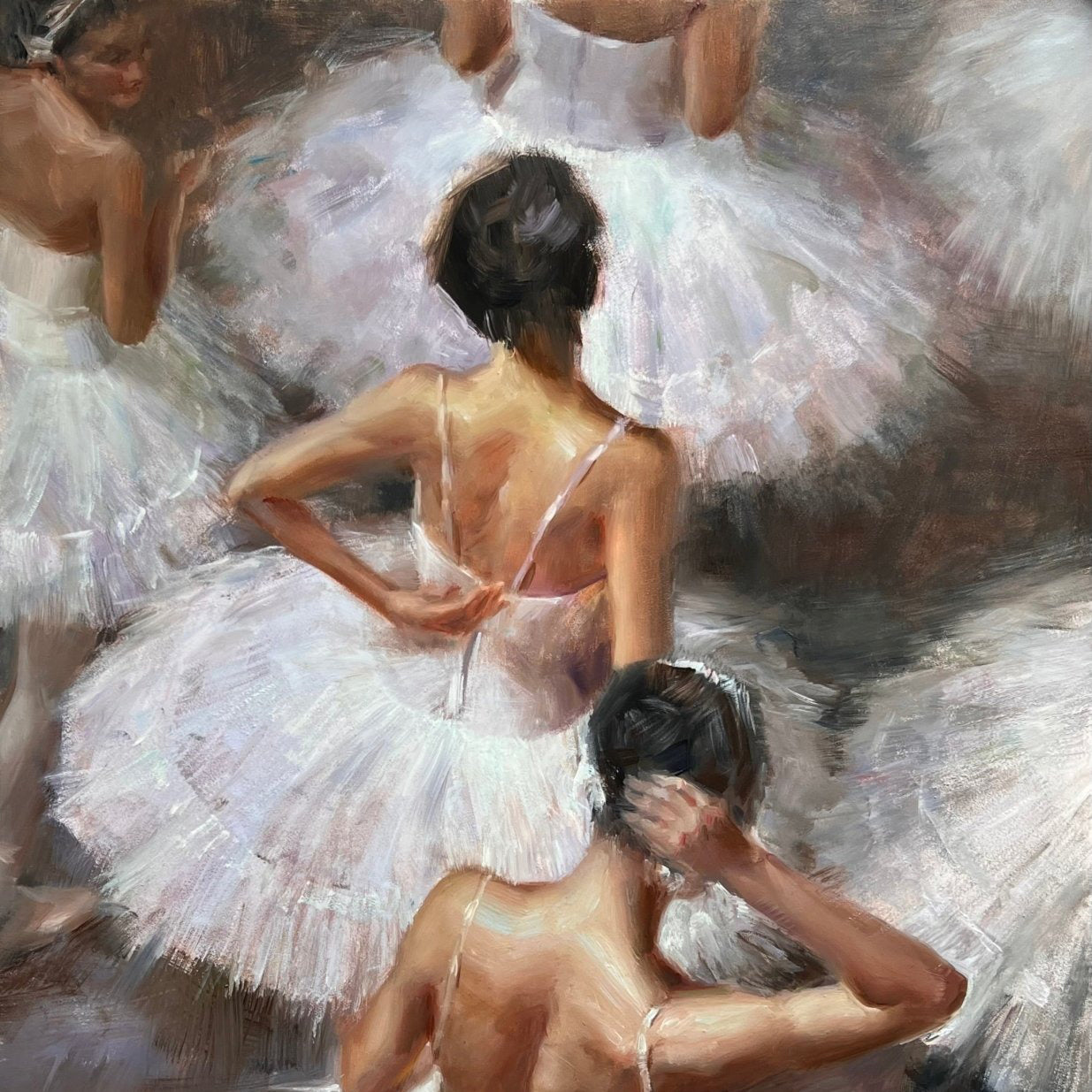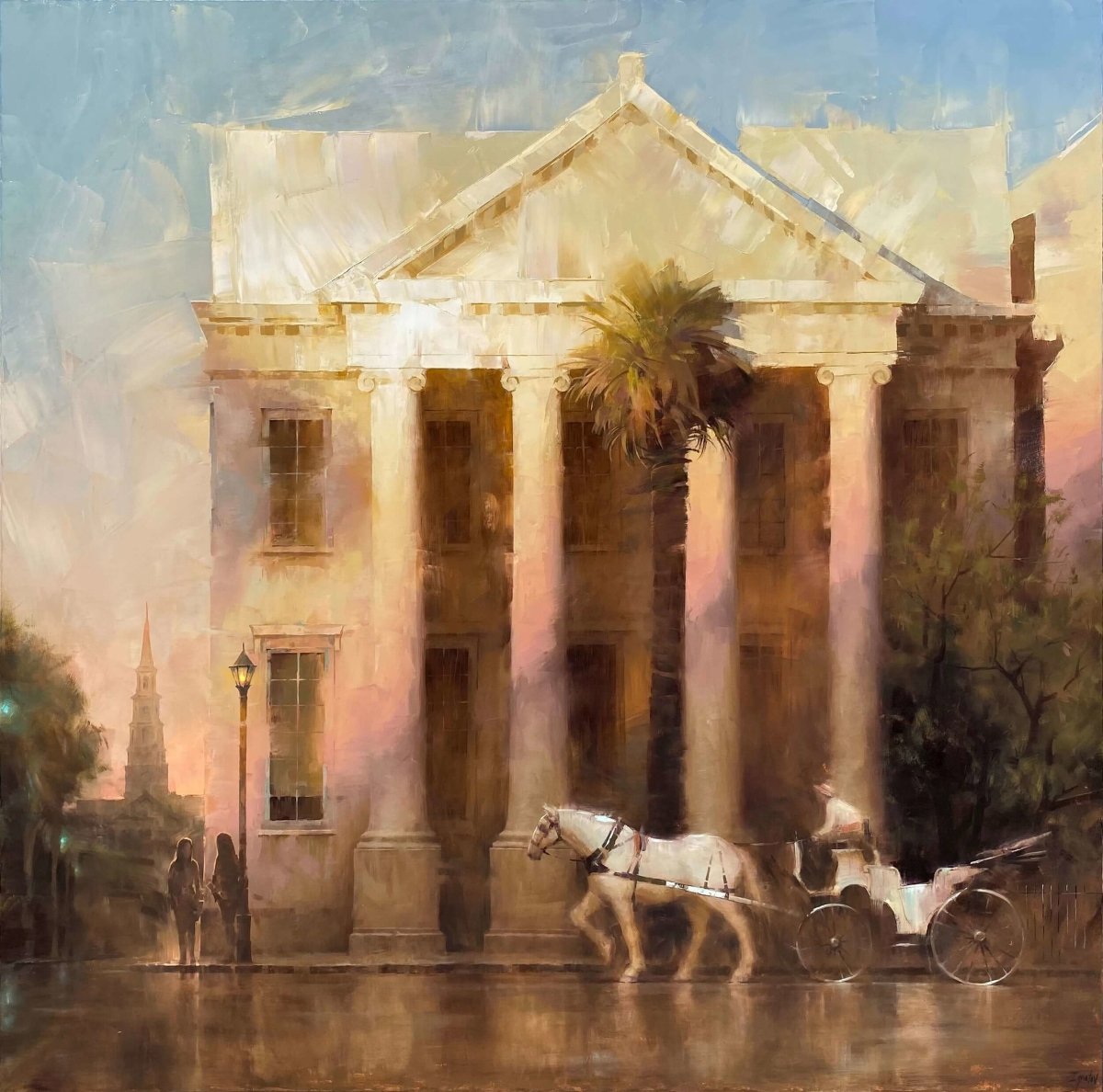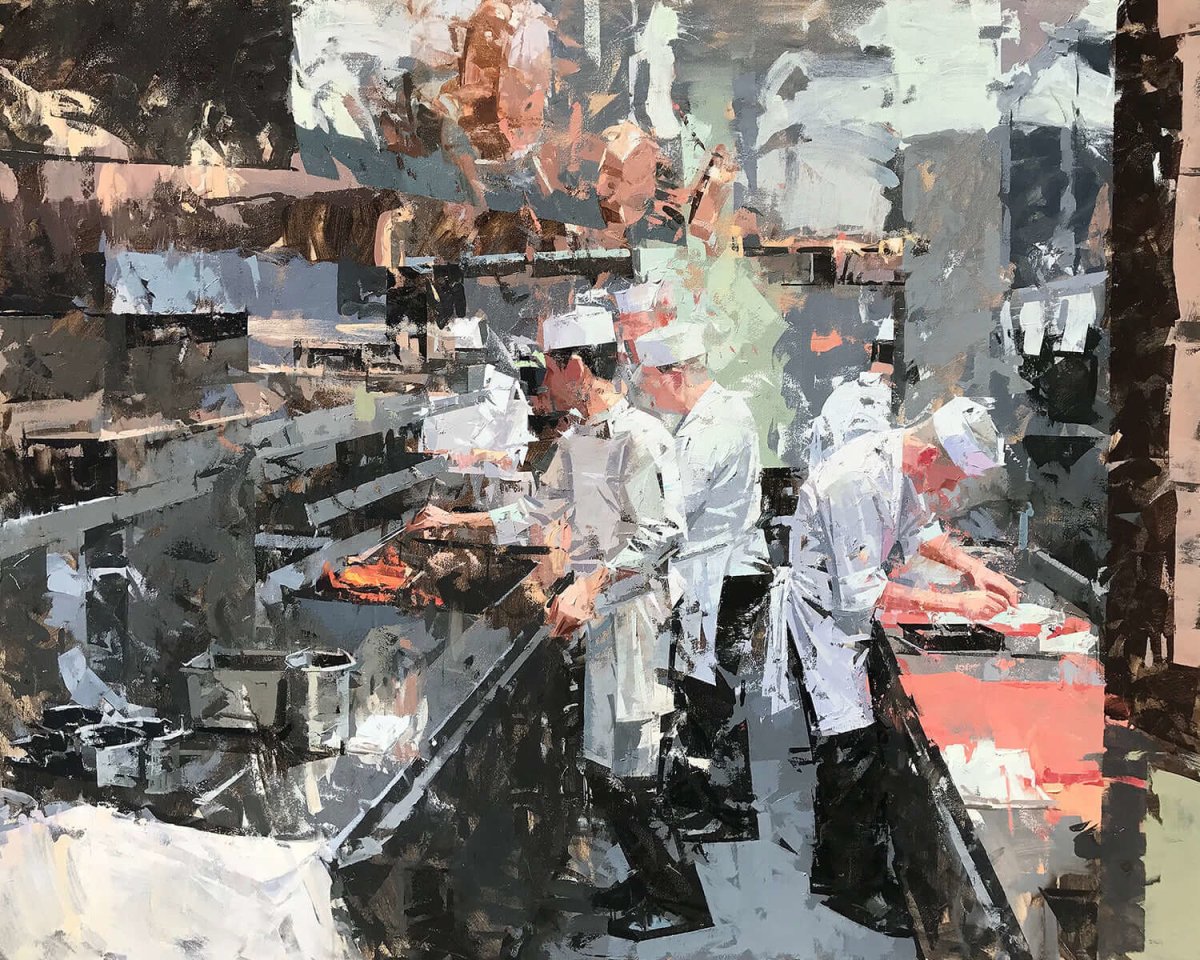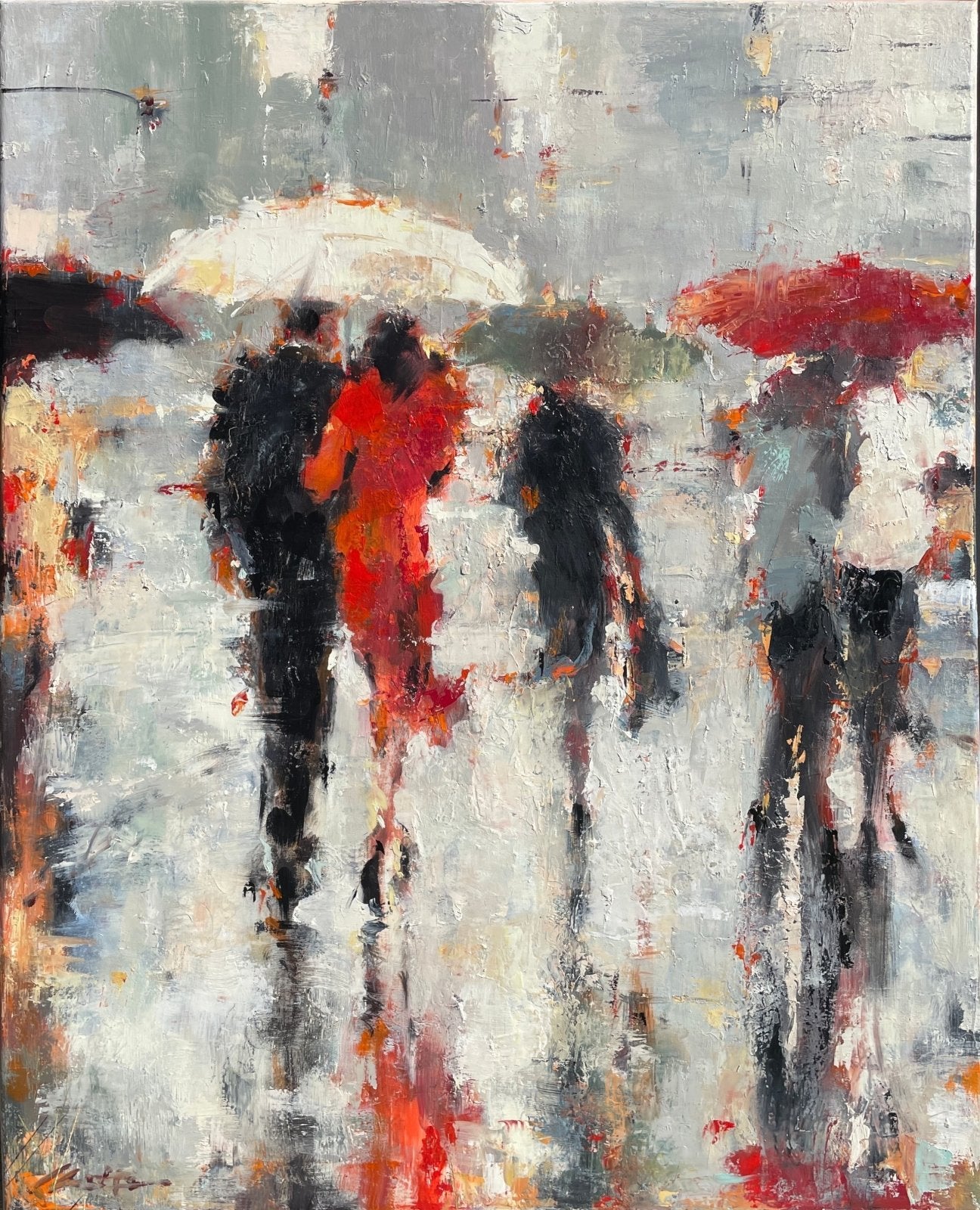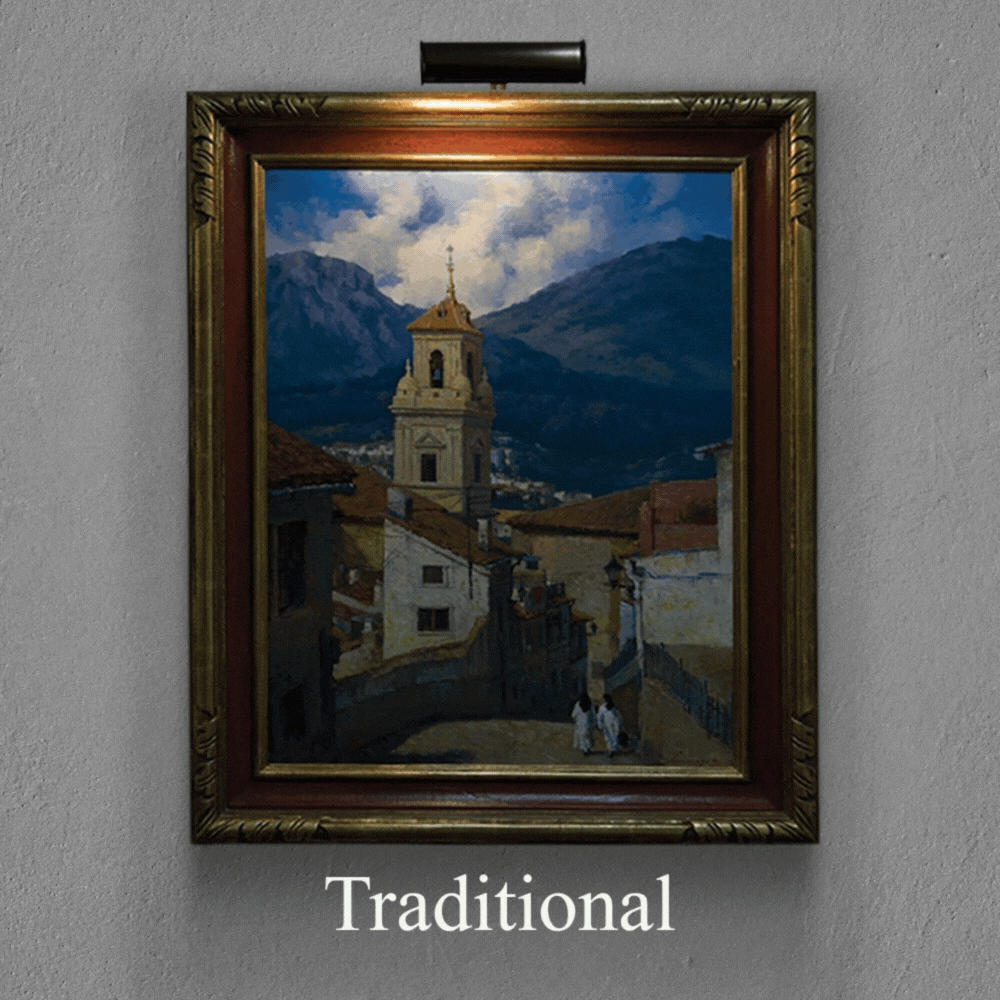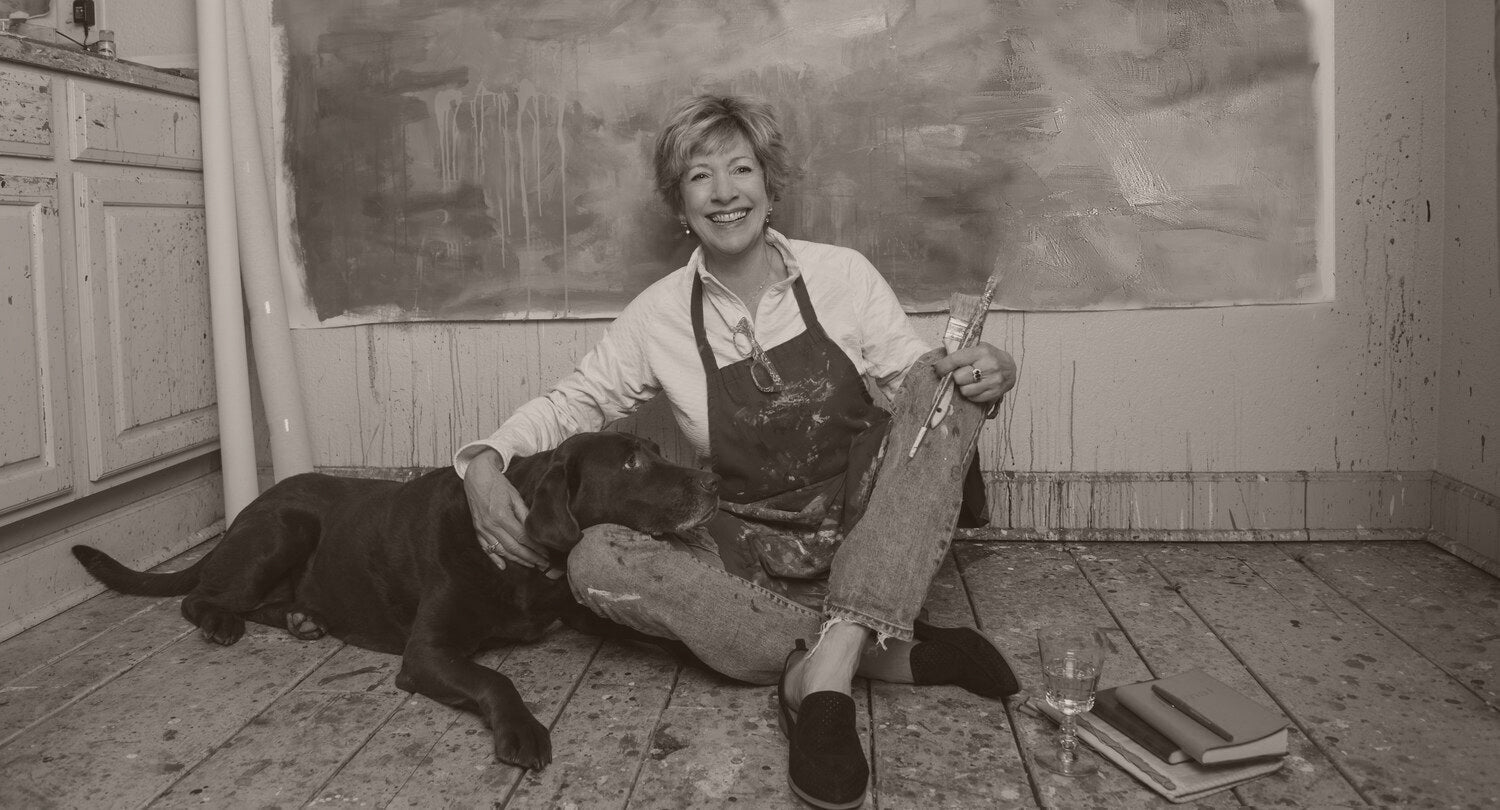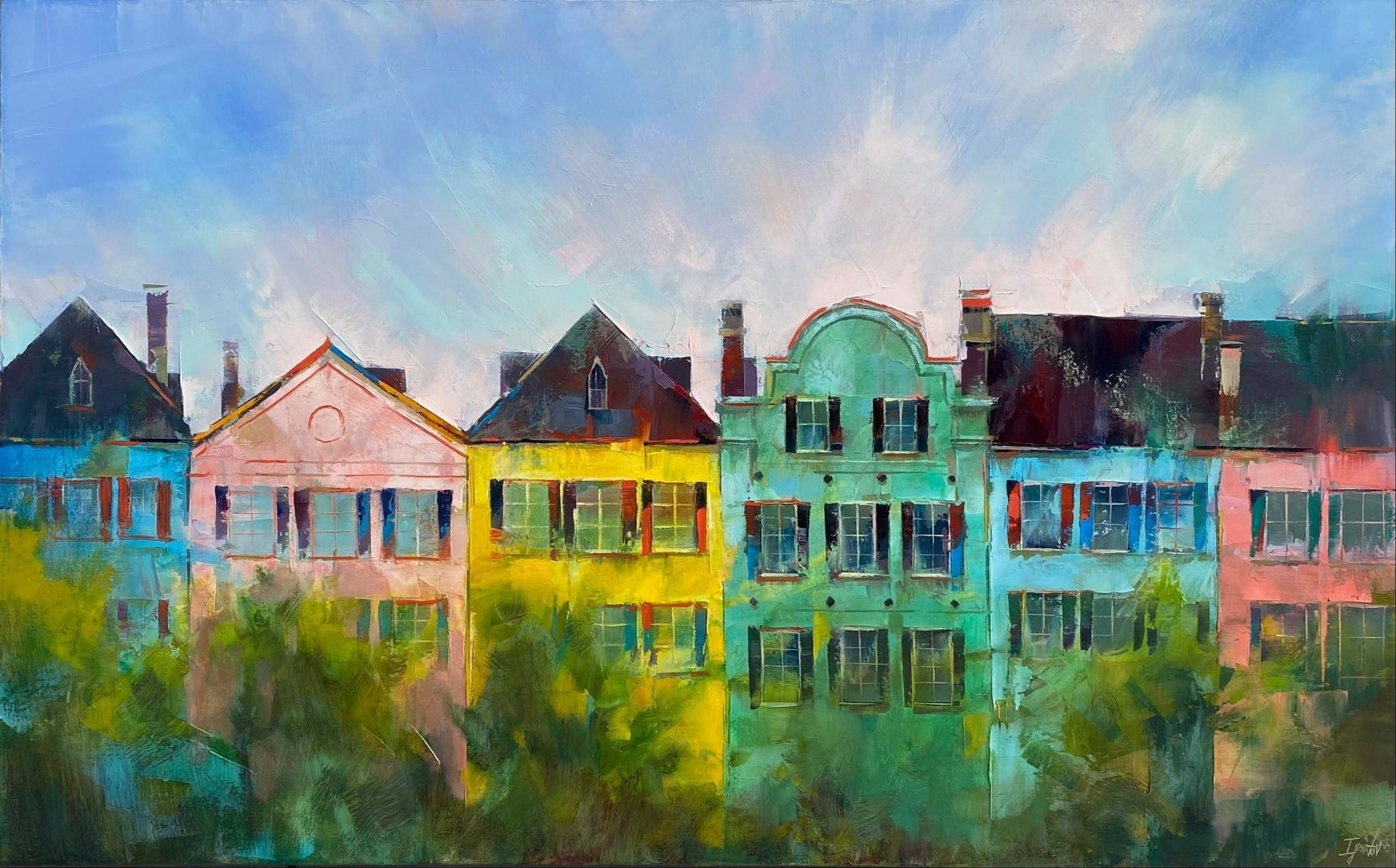Spotlight on Artist Curt Butler
In this insightful interview, artist Curt Butler offers a glimpse into his artistic journey and the intricate process of bringing his captivating paintings to life. As an artist with a diverse background, Curt Butler shares his gradual realization of painting as his true calling and emphasizes the importance of continuous learning and exploration. With a deep appreciation for color, movement, texture, and mood, Butler draws inspiration from both art history and the captivating landscapes of the Lowcountry. Discover how his unique artistic voice emerges through the interplay of abstraction and representation, and how his passion for art transcends societal perceptions, reminding us of the profound impact artists like Curt Butler have on our collective human experience.
Artist Curt Butler: Q & A
Q. Artist Curt Butler, let's start at the beginning – when did you first realize that painting was what you wanted to do with your life? Was it a “Eureka!” moment, or a more gradual realization?
A. Painting was a gradual honing of focus from knowing at a young age that I would always do something creative. I believe there are many revisions and countless first, second, and third acts to the play of becoming an artist. To name a few: I have been an art student, graphic designer, a sequential artist, an art teacher, and an oil painter. All of it becomes a creative stew at some point and you realize it's a deep well to draw from towards finding your artistic voice.

Q. It has been a remarkable and varied journey for you. You remain active as an instructor and committed to educating other artists. What are you still learning and exploring?
A. If you're an artist you are committed to learning. There is so much to learn and explore from art history, techniques, and process. Color mixing alone can take many years to master and we haven't even begun to think about what we want to say with our art. It is a lifetime pursuit worth its weight in gold.
From a practical perspective, the key is to find one or two main areas of focus a year to improve on. Sometimes, after extolling what was in my head before class began or during class demonstrations, I couldn't wait to get to my own canvas to paint what I had drilled into my head from four-to-six hours of teaching.
Recently, I found myself wanting to tackle light source and various lighting effects within compositions. I think that shows in some of my most recent work over the course of 2022, paintings like “Narrows Beak” and “Moon Fall Promenade.”
Q. And there's also satisfaction in watching your instruction click on a light for your students, I imagine?
A. Art is a form of expression and we are ultimately transforming that into paint on a canvas. As a teacher, we are sharing that knowledge with others to create the start of their journey. The most rewarding part of teaching is to watch others fall in love with art for the first time: it reminds you why you do what you do. There is no greater gift.
Q. Which artist did you first fall in love with their work, and which ones are your biggest influences?
A. I was always taught to try to glean a word from an artist I might admire before I committed to admiring them, their life, their style or body of work. This ensures that we remain authentic to who we are instead of becoming a bad copy of another artist we admire.
I continually check the words I am working with in the moment and over time to see if they remain authentic. At times and over the years, the words can change or simply become less important. New words can emerge. This is the artistic journey spelled out literally.
I keep a “favorites file” on images painted or otherwise that for whatever reason simply catch my eye. Every year I go through the file to see that they still resonate. My current words are color, movement, iconic, texture, and mood. I gravitate towards artists who are good with these words.
Q. I won't let you get away without dropping some names...
A. I'll lean into the classics of the previous century, my formative years: Gerhard Richter, Bernie Fuchs, Richard Schmid, and Mark Rothko. These are artists who not only match my current words, but who are of course unquestioned masters whose works stand the test of time.
Q. We get to see the end of each “journey,” but a painting's initiation is typically hidden from the audience. Can you talk about a specific painting of yours and walk through your inspiration for the piece, how you transitioned it from simply an idea to a work-in-progress?
A. A time of day painting in the landscape or in this case the marsh can just be about reproducing what I see and translating it into paint. However, with “Narrows Beak,” I wanted to create a mood with a waning light source in the low horizon bouncing its light across transparent and reflective surfaces. Since “texture” is an abstract word I am interested in apart from the whole, I wanted some of the texture to be both abstract as well as representational.
The initial stages were focused on setting up layers of abstraction rather than drawing. Next, I turned my attention to the focal point and making it representational with all the tricks in the book including color, edges, shape, value, form, texture, and space. I now have two extremes in the painting to transition between, along with the words texture and mood. The journey in process is to balance the two extremes.
This is an example of some of my thought process in initial and various stages of painting that keeps me focused towards completion.
Q. Encaustic painting, which uses heated wax to contain pigments in a way that adds depth and luminosity, is maybe a lesser known technique, however it's one that has been essential in your development. How has it shaped your approach to your work, and does it play a role in how you select subjects?
A. Encaustic painting was an earlier stage of my working process that I no longer employ as much. However, the journey of exploring that process has made me appreciate different approaches to application of paint on canvas. I believe it taught me that application along with mark-making are a big part of what I do. Finding different ways of doing that will no doubt be part of my repertoire moving forward. I love texture. I am currently finding ways of creating visual texture without the build up of thinker paint or wax.
Q. Many of your works obviously have a deep local connection. What is it about the Lowcountry that keeps you inspired?
A. The Lowcountry is a magical place that I really fell in love with while in grad school at Savannah College of Art and Design. I photograph and paint on location at various sites near the marsh and I'm completely at peace with the sounds of the marsh, the light coming across the reeds, and the vista of live oaks at a distance. It truly is a never ending wealth of subject matter to capture and explore. “Sundown on the Marsh” shares a moment and a place that are sublime.
The length of the coast is vast and ever-changing. I travel up and down the coast quite often capturing places and times of day, moment to moment, searching for a place with a special mystique. Some recurring themes for me seem to make way to personal iconography. Boats become the vessel. Marshlands become the artist journey, and shorebirds become the individuals and group dynamics that affect you along the way.
Q. There's an interesting contradiction in many of your paintings. On the surface they may appear to be moments or snapshots in time, but they also have a very distinct sense of being eternal. Is that something you're aware of while you're creating?
A. I enjoy working with the iconic everyday snapshot and transforming that into a metaphor that could be representative of something more lasting and, over time, perhaps something symbolic. Sometimes this is my own personal iconography, but it's definitely the secret sauce to understanding your own work and why you are painting.
For instance, if you live in the Lowcountry you are well versed on the subject of the marsh and it is an endless source of visual inspiration from day to day and time of day. However, the marsh for me represents the hero's journey that each of us take in life and the different stages of that journey winding and weaving its way through our own psychological landscape. Literature becomes important. Joseph Campbell and his work for example. Finding a deeper well to draw from other than just visual reference.
This may explain why there is both a surface appreciation to my work and a deeper universal truth at the same time that keeps it fresh and keeps you looking longer. I look for it, and at times I reference these larger themes in my titles: you can see that impulse in works like “Dusty Mirror” and “First Blush.”

These are the things that inform the artist's voice, which in my case is sometimes hiding within marsh grass reeds but waiting to be discovered!
Artist Curt Butler thoughts on Art:
Q. A couple years ago, in the early months of the pandemic, Singapore's The Sunday Times published a survey about “non-essential jobs” and the results went viral because “Artist” was deemed the least essential job by respondents, finishing behind “Telemarketer” and “Social Media Manager.” Care to demolish this folly? You may be as savage as you like.
A. I had an international student who came up to me in the classroom after the 9-11 terrorist attacks. Akiko said to me in broken English, “I make crane for my final project.” I wasn't quite sure what she was referencing at the time but I knew she was my best and brightest art student with an enormous amount of talent who could write her own ticket when it came to permission from me.
I found out later what she was referencing was an Asian tradition of “one thousand cranes.” In the tradition, 1,000 origami cranes are folded to purge a recent disaster: the person whose effort is recognized for such a feat is awarded their wish of peace. These paper cranes are then strung in sequence and draped around the neck in full kimono wardrobe for all to see and witness. Someone with this amount of patience, perseverance and intention is regarded as the hero necessary to dispel such overwhelming dread from a shared catastrophe.
It brought me to tears when Akiko walked back into the classroom a week later having completed this feat, in kimono wardrobe wearing 1,000 cranes draped around her neck. To this day, it is without a doubt the most beautiful thing I have ever seen.
Her hair was pinned by wooden sticks exposing her long neck. Her makeup was subtle and simple but dulled her complexion to the point that her wardrobe seemed to glow in reds and golds. The origami cranes were made from multi-colored papers that were in and of themselves artwork. Each crane, meticulously folded, combined into a large rope-like shape that engulfed her body as it wrapped around her neck seemingly endless times. She was larger than life. Her smile completed it.
Maybe art isn't essential. But maybe it is something much more far-reaching. Maybe it can save the days ahead. And, maybe nothing could be more momentous for the human condition.
Q. Well said. Lastly, I won't ask you to choose a favorite of your paintings, but do you have one that originated from a particularly unique place or that emerged despite some unexpected (or expected) struggle?
A. I am constantly searching for new subjects that for whatever reason catch my eye or garner my attention. Recently, I was presented with a drone photography shot of downtown Charleston. It struck me as dynamic but the movement of it was stiff and rigid. Not exactly what I look for. However, I thought it would be interesting to do it in a way that was more abstract expressionistic, with thirty-percent information and the rest color theory and patterns of lights and darks.
I was surprised at how much I enjoyed the beginning stages. I took it to the gallery opening night of my one-man show at LePrince Fine Art Gallery. I had a blast taking it to the next step in the process, as onlookers asked me questions about what I was doing and what I saw in the process. I said, “It's a matter of moving your eye where I want you to look and having more information than I need. My job is to figure out how to see less, and most people are under the impression that we see more.”

“Church and Broad” has since sold, but I am currently working on another commission from the exposure and I hope to do many more like it in the future.
In conclusion, artist Curt Butler's journey as a painter is a testament to the power of dedication, growth, and artistic exploration. His ability to seamlessly balance abstract elements with representational techniques creates timeless and evocative works of art. Through his dedication to teaching and inspiring others, Butler not only shares his knowledge but also witnesses the transformative power of art in the lives of his students. With each brushstroke, he captures the essence of the Lowcountry, its mesmerizing landscapes, and the universal themes that resonate within them. Curt Butler's artistic voice is a testament to the enduring significance of art, reminding us of its ability to transcend boundaries and touch the depths of our souls.


